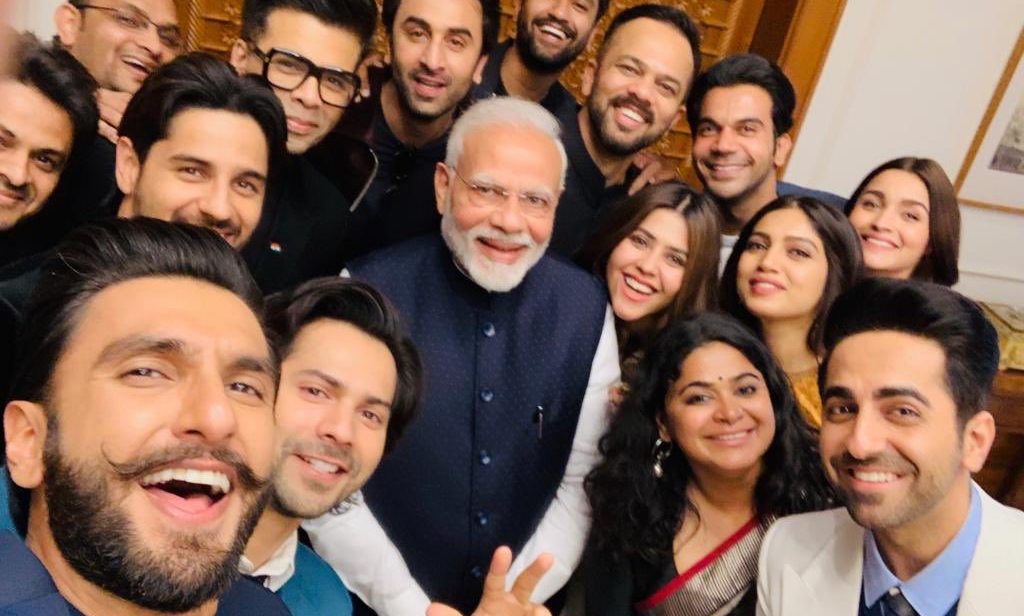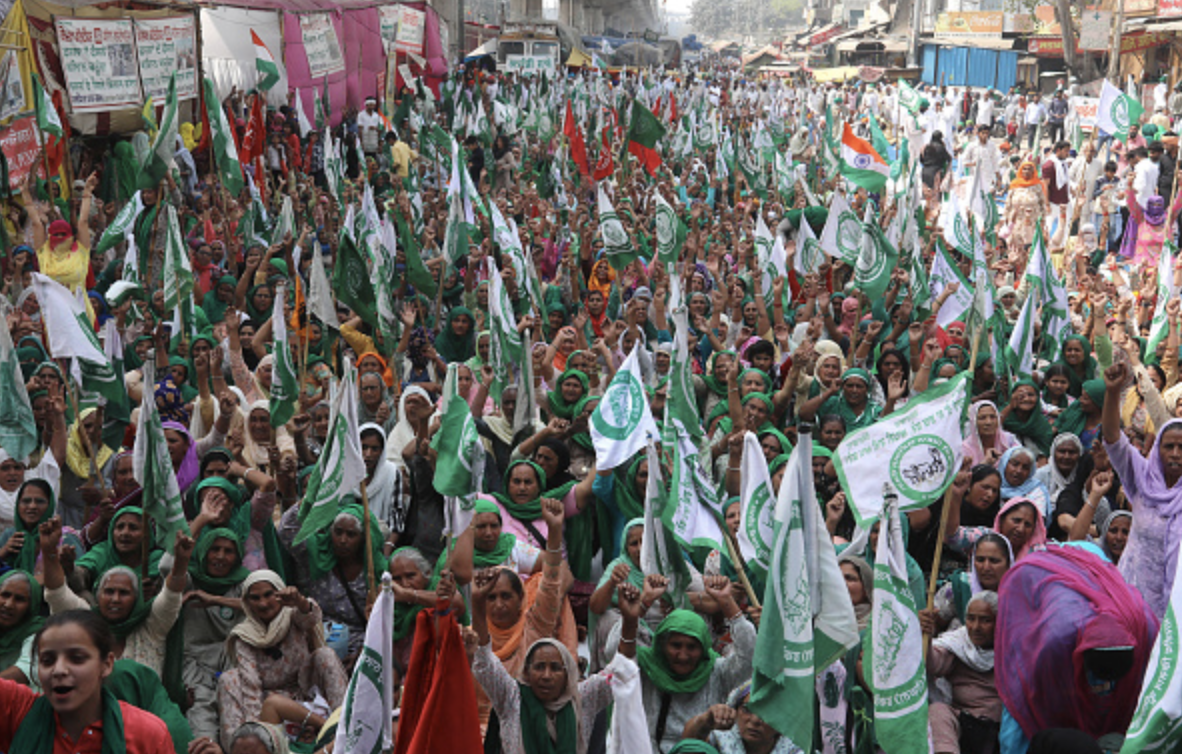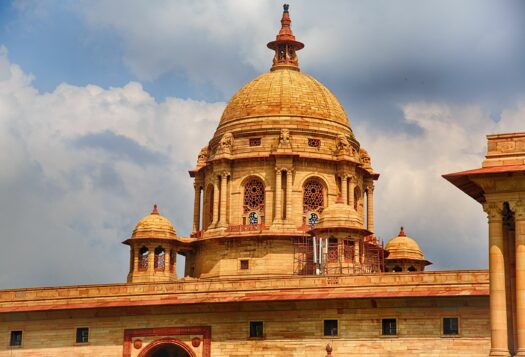
The Rihanna Effect
It was the tweet read around the world: on February 2, pop star and business mogul Rihanna linked to a CNN article about the Indian government instituting internet blackouts to suppress the ongoing farmers’ protest and asked of her 100 million followers, “why aren’t we talking about this?!”
About 15 hours later, major government officials boosted a Ministry for External Affairs (MEA) statement blaming foreign “vested interest groups” and ignorant celebrities for feeding an anti-India campaign, which was later echoed by Prime Minister Narendra Modi himself. The MEA’s #IndiaTogether and #IndiaAgainstPropaganda hashtags were also tweeted by several Indian celebrities, including virulent-BJP supporter actress Kangana Ranaut, usual suspect actor Akshay Kumar, and even heretofore apolitical figures like legendary cricketer Sachin Tendulkar. Offline, the Delhi Police lodged a first information report to investigate the origins of a digital “protest toolkit” shared by Greta Thunberg, which led to the arrest of 22-year-old climate activist Disha Ravi on sedition charges.
Perplexing as it was for India-watchers the world over, the #IndiaTogether campaign did not spring out of nowhere. Rather, it hinges on the Modi government’s hypersensitivity to celebrity attention and its potential to legitimize—and more dangerously, to delegitimize—government policies, popular movements, and national narratives. In order to fully disentangle the drivers of this campaign, firstly we must contextualize it as the Modi-led BJP’s latest revision to a long-held response playbook for countering criticism. Secondly, we must evaluate this playbook’s traditional emphasis on garnering celebrity endorsements—most importantly from Bollywood, the so-called national film industry. As questions urgently coalesce around India’s potential authoritarian slide, understanding the origins and evolution of this playbook can shed light on the increasingly fraught stakes of social media, celebrity, and dissent in India today.
As questions urgently coalesce around India’s potential authoritarian slide, understanding the origins and evolution of this playbook can shed light on the increasingly fraught stakes of social media, celebrity, and dissent in India today.
The Remaking of Narendra Modi
We can trace the BJP’s present-day understanding of social media activity’s potential most importantly to Narendra Modi’s rise from regional to national politician. As scholars and journalists have documented, and as government ministers acknowledge, Modi turned to social media to communicate directly with constituents and to deny a long-adversarial mainstream press the chance to question his role in the 2002 Gujarat riots.
Specifically, as Joyojeet Pal argues, in early 2013, Modi rebranded himself online through a “range of oft-banal but mostly positive messages” as the image of India’s modern political future in an increasingly online society. His interactions with national figures in India, including celebrities and cricketers, were critical in normalizing the heretofore controversial figure in the national public imagination. Later, these celebrity exchanges allowed Modi to garner greater media support, even if the stars in question refused to actually endorse him.
Once elected in 2014, the new administration expanded its online machinery, especially through the now-infamous BJP IT cell, and Modi himself generally refused to engage with the mainstream Indian press. The new government found a useful partner in Bollywood, which bolstered the administration’s policies and narratives—not to mention Modi himself. By the time of Modi’s reelection in May 2019, as a result of successive, sometimes-violent scandals catalyzed by Hindu Right political parties, Bollywood had ceded much of its agency to the government. As such, Modi’s experience using celebrity endorsement to legitimize his own rise to power was a central force behind his government’s approach to social media discourse.

Hindsight is 2020
Before disentangling the BJP’s current online paroxysms, it is necessary to examine India’s social media environment in 2020. This was dominated by two stories of government retaliation—one more successful than the other.
The first instance concerns the Citizenship Amendment Act (CAA), a piece of legislation passed in December 2019 that offers pathways to citizenship for non-Muslim illegal immigrants. As mass protests sprang up against the CAA, the Hindi film industry tended towards careful ambivalence. However, actress Deepika Padukone’s January 2020 visit to Jawaharlal Nehru University in solidarity with students attacked by an RSS-affiliated mob triggered an unprecedented upswell in celebrity support for protesters. The BJP’s counter-attempt to rally celebrity endorsements for the embattled legislation failed miserably—the first time the party’s response playbook failed in such spectacular fashion.
While the anti-CAA movement did not resonate widely enough to become a true threat, its scale, celebrity support, and durability against government pressure (until the coronavirus outbreak) rattled the BJP. This experience colored its approach to the second instance of government retaliation to dominate Indian social media in 2020: the fallout from actor Sushant Singh Rajput’s suicide. This Bollywood tragedy metastasized online into a lurid “murder” case that BJP online supporters, media allies, and government agencies seized upon throughout the summer and fall of 2020. With their support, the Rajput story bled into electoral politics in Bihar, Rajput’s home state, and internecine political conflicts in Maharashtra, home of Bollywood; led to the arrest of his girlfriend, actress Rhea Chakraborty, for allegedly purchasing cannabis; and sparked a continuing federal “drug probe” of the film industry.
Why would the Modi government bite the hand that had fed it, and that it had fed in turn, in such salacious fashion? Simply put: to deflect national attention from uncomfortable questions about its response to the coronavirus, the contraction of the economy, and dismal reports from its border crisis with China. Still stinging from its CAA embarrassment, the BJP and its supporters shifted the tides of the national conversation by bullying Bollywood back into submission.
The Rajput story—a sensationalist distraction from genuine domestic and foreign policy crises, shaped by social media discourse, and weaponized against influential potential dissenters—is most illustrative for the current predicament. Celebrity attention seems to most disturb the Indian government, which is well-versed in its potential to legitimize—or delegitimize—otherwise controversial ideas.
Celebrity attention seems to most disturb the Indian government, which is well-versed in its potential to legitimize—or delegitimize—otherwise controversial ideas.
Farmers on the Brain
The current farmers’ protest is everything that the anti-CAA protest was not: a broad-based movement by a key political constituency that has not been shut down by COVID-19 protocols, nor easily rhetorically tarred with the anti-national tag (though attempts have been made). Multiple rounds of negotiations between the government and the farmers speaks to the importance the former accords to resolving the situation—or so it seemed until January 26.
The violent clashes between the Delhi police and protesting farmers on Republic Day sparked paranoia among Indian leadership about losing control of the protest-management narrative. It scrambled to shut down stories about farmers getting shot and killed during clashes, first by charging several journalists with sedition, and then, on February 1, demanding Twitter withhold accounts that were either associated with or covering the protests, as well as those accounts boosting false hashtags. With Twitter reinstating some blocked accounts later that day, it was the BJP’s failure to staunch online criticism that once again stung the most. This has led the government to pressure noncompliant Twitter, WhatsApp, and Facebook employees with prison—despite their overall cooperation with Indian officials—and to continually lash out against the criticism it still feels most acutely.
Barely a day after the Twitter’s account reinstatements, Rihanna’s tweet created ripple effects of criticism from across the global Twittersphere. Unable to shut down such a jurisdiction, Indian leaders decided to rally around the digital flag in the way they have countless times before: by having celebrities from the continuously cowed Bollywood and from the formerly secular cricket world boost their narrative in a closely-coordinated social media campaign.
Despite the government’s best efforts, or perhaps because of them, #IndiaTogether was destined to backfire. It has only galvanized more strident critiques of the Indian government’s suppression of protesters and fed international concern about India’s democratic credentials. But it is clear that Modi and the BJP were willing to risk their reputation to reshape domestic perceptions of the protesters and stamp out doubts about their own handling of the situation. That they tried to do so by pitting star against star reflects long-held BJP beliefs in the power of social media, especially as mediated by “influencers.” The #IndiaTogether campaign therefore represents the next level of a social media strategy that has already garnered the BJP significant political and imaginative dividends at home.
Social media is just one venue of political contestation and its impact may pale in comparison to the situation on the ground, where arrested protesters have reportedly been the victims of police brutality. But as the last year and the #IndiaTogether campaign shows us, social media and its most famous users can be valuable bellwethers for understanding Indian leaders’ priorities and their actions in the real world—if only we continue to stay tuned.
***
Image 1: Karan Johar via Twitter
Image 2: Anadolu Agency via Getty Images


